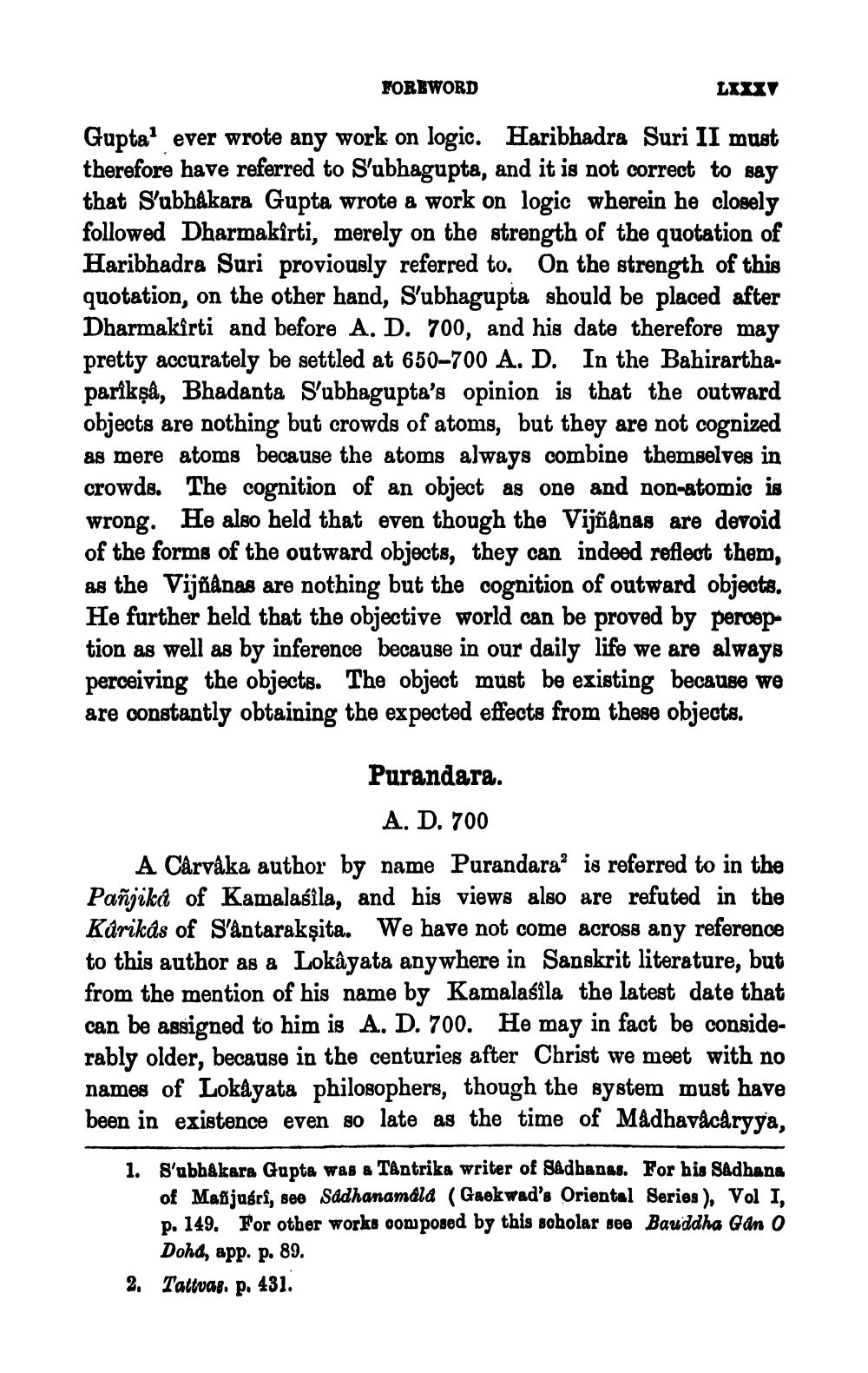________________
FOREWORD
Gupta' ever wrote any work on logic. Haribhadra Suri II must therefore have referred to S'ubhagupta, and it is not correct to say that Subhakara Gupta wrote a work on logic wherein he closely followed Dharmakirti, merely on the strength of the quotation of Haribhadra Suri proviously referred to. On the strength of this quotation, on the other hand, S'ubhagupta should be placed after Dharmakirti and before A. D. 700, and his date therefore may pretty accurately be settled at 650-700 A. D. In the Bahirarthaparikşa, Bhadanta Subbagupta's opinion is that the outward objects are nothing but crowds of atoms, but they are not cognized as mere atoms because the atoms always combine themselves in crowds. The cognition of an object as one and non-atomic is wrong. He also held that even though the Vijñanas are devoid of the forms of the outward objects, they can indeed reflect them, as the Vijianas are nothing but the cognition of outward objects. He further held that the objective world can be proved by perception as well as by inference because in our daily life we are always perceiving the objects. The object must be existing because we are constantly obtaining the expected effects from these objects.
Purandara.
A. D. 700 A Cårvåka author by name Purandara’ is referred to in the Pañjika of Kamalasila, and his views also are refuted in the Kárikás of S'ântarakṣita. We have not come across any reference to this author as a Lokâyata anywhere in Sanskrit literature, but from the mention of his name by Kamalasila the latest date that can be assigned to him is A. D. 700. He may in fact be considerably older, because in the centuries after Christ we meet with no names of Lokůyata philosophers, though the system must have been in existence even so late as the time of Madhavácâryya,
1. S'ubh&kara Gupta was a Tantrika writer of Sadhanas. For his Sadhana
of Manjusri, see Sadhanamala (Gaekwad's Oriental Series ), Vol I, p. 149. For other works oomposed by this sobolar see Bauddha Gan O
Dohd, app. p. 89. 2. Tattvas. p. 431.




